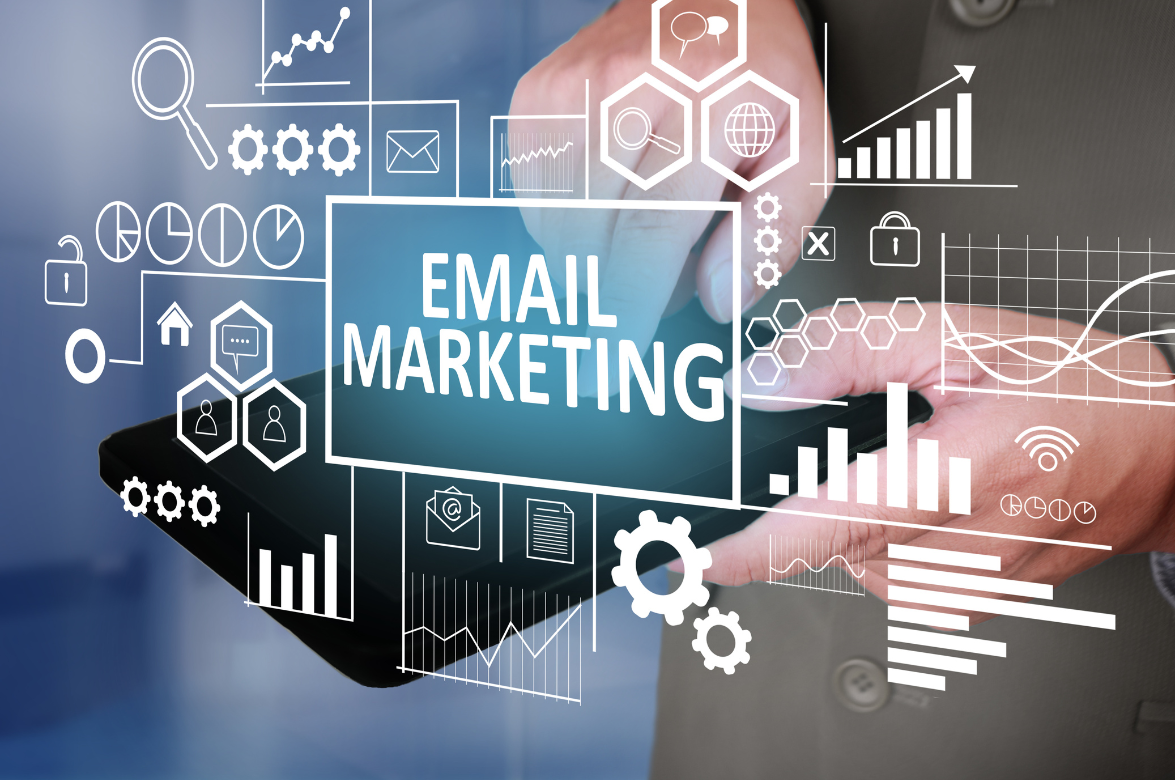
The email marketing strategy should have a very specific purpose and goal. One goal of an email marketing strategy is to keep the products at the top of a potential customer’s mind, and begin to brand the products. By sending an email to someone on a regular basis, you can tell them about your products and remind them to visit the website or contact you for additional information.
You can also purchase email addresses of people who told other companies that they would like to hear about offers from “third parties”. Sometimes these are available from partners. This would typically be a one-time email message, telling them about a specific product offer, perhaps including promotional pricing.
Opt-in email newsletters are another way to keep your name in front of our potential customers. However, to be effective, the information presented in the newsletter should be valuable enough to make people sign up to receive the newsletter. And it should provide enough valuable information so that they want to continue to receive it on a regular basis. Simply telling them about your products isn’t enough; it should include news or commentary. Email newsletters don’t come without a cost, as someone must write it and be responsible for sending it out on a regular basis.
Before a decision is made to start an email newsletter, many questions should be answered first:
- Who is going to write it?
- Can we produce enough unique material about a subject to warrant calling it a newsletter?
- How will we get them to opt-in?
- How many people do we expect to reach each time it is sent?
- What should we expect as the subscription level (how many subscribers at one time)? At what subscription level does it make sense to publish the newsletter and at what level does it not make sense to publish the newsletter? In other words, if we only have 10 subscribers, then would it make sense to continue publishing the newsletter? What about 50 subscribers? 100? 200?
- Do we need to outsource the technical aspects of publishing the newsletter or can we handle it in-house?
If a decision is made to outsource the technical aspects of the newsletter (such as emailing it and handling the subscriptions (subscribing and unsubscribing), then a specific set of requirements must be put together. Then, once those requirements are approved, an RFP should be made available to a few vendors.
Options other than writing and hosting a newsletter of your own, is advertising with a text-based ad on other email newsletters and/or mailing lists. Many industry trade publications currently send out an email newsletters or email editions (some are daily), as well as various other industry-related websites. Also, there are mailing lists (subscribers send an email to a server and it is then automatically re-sent to all subscribers of the mailing list). If any advertising like this is done, then you need to have a strong handle on what happens when someone clicks on an ad (or visits a specific web page). They need to find exactly the information they’re looking for and then be presented with a call for action and an incentive to contact you.

Crafting a Winning Email Marketing Strategy for B2B Corporations
In the world of B2B (business-to-business) marketing, email continues to be a powerful tool for building relationships, nurturing leads, and driving conversions. An effective email marketing strategy can make all the difference in reaching your corporate goals and establishing your brand as a trusted partner in your industry. In this article, we’ll explore key components of a successful email marketing strategy tailored specifically for B2B corporations.
Understanding the B2B Landscape
Before diving into the strategies, let’s highlight why email marketing is crucial for B2B corporations:
- Personalized Communication: Emails allow you to deliver highly personalized content to individual decision-makers within target organizations, addressing their specific pain points and needs.
- Nurturing Long-Term Relationships: B2B transactions often involve longer sales cycles. Email marketing helps you stay top-of-mind with potential clients and nurtures leads over time.
- Educational Content: Email provides an ideal platform to share valuable industry insights, case studies, and educational materials, positioning your corporation as an industry thought leader.
- Tracking and Analytics: Advanced email marketing tools offer detailed metrics, enabling you to track engagement, open rates, click-through rates, and conversion data, facilitating data-driven decision-making.
Now, let’s delve into crafting your B2B email marketing strategy:
1. Define Your Objectives
Start by setting clear and measurable objectives for your email marketing efforts. Common goals include:
- Lead Generation: Acquiring new leads and expanding your database of potential clients.
- Lead Nurturing: Building relationships with leads through valuable content and personalized communication.
- Conversion: Encouraging recipients to take specific actions, such as requesting a demo or making a purchase.
- Customer Retention: Engaging existing clients to upsell or cross-sell additional products or services.
2. Build a Targeted List
Your email campaigns are only as effective as your recipient list. Segment your email list based on factors such as industry, job title, company size, and past interactions. This allows you to send tailored messages to different groups, increasing relevance and engagement.
3. Create Compelling Content
Content is the heart of your email marketing strategy. B2B recipients are seeking informative, valuable content that addresses their pain points. Consider including:
- Educational Articles: Share industry insights, trends, and how-to guides.
- Case Studies: Highlight success stories that demonstrate the value of your products or services.
- Webinars and Events: Promote webinars, seminars, and conferences your corporation is hosting or attending.
- Product Updates: Inform recipients about new features, enhancements, or offerings.
- Personalized Recommendations: Use data to recommend relevant products or services based on the recipient’s history and preferences.
4. Design Engaging Emails
Ensure your emails are visually appealing, mobile-responsive, and easy to read. Use eye-catching headlines, concise copy, and compelling visuals. A well-designed email increases the chances of recipients opening and engaging with your content.
5. Implement Automation
Marketing automation tools can streamline your email marketing efforts. Use automation to send welcome emails, drip campaigns, and follow-up messages based on recipient behavior, ensuring timely and relevant communication.
6. A/B Testing
Continuously optimize your email campaigns through A/B testing. Experiment with different subject lines, email content, and send times to determine what resonates most with your audience. Analyze the results and adjust your strategy accordingly.
7. Monitor and Analyze
Regularly monitor your email campaign performance. Track metrics like open rates, click-through rates, conversion rates, and unsubscribe rates. Use this data to refine your strategy and make data-driven decisions.
8. Compliance and Data Security
Ensure that your email marketing practices comply with data protection regulations, such as GDPR or CCPA. Protect the privacy and security of your recipients’ information, and provide easy opt-out options.
9. Continuous Improvement
Email marketing is an evolving field. Stay up-to-date with industry trends, technology advancements, and changes in your target audience’s behavior. Adapt and refine your strategy as needed to maintain relevance and effectiveness.
A well-executed email marketing strategy can be a game-changer for B2B corporations. By understanding your objectives, segmenting your audience, and consistently delivering valuable content, you can build and nurture relationships with potential and existing clients, ultimately driving growth and success for your corporation in the B2B arena.